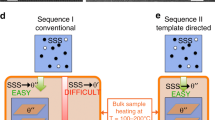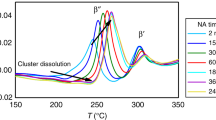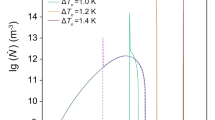Abstract
IT appears from various experiments that the ease with which a crystal can grow in a deformed matrix depends very much on the mutual orientation of growing and disappearing lattice domain. This is already obvious from the fact that, in a recrystallizing coarse-grained material, the new crystals show corrugated boundaries, demonstrating visibly that some of the original grains are consumed at a faster rate than others1. Recent experiments give a far more striking proof of this phenomenon.
This is a preview of subscription content, access via your institution
Access options
Subscribe to this journal
Receive 51 print issues and online access
$199.00 per year
only $3.90 per issue
Buy this article
- Purchase on Springer Link
- Instant access to full article PDF
Prices may be subject to local taxes which are calculated during checkout
Similar content being viewed by others
References
Burgers, W. G., Proc. Roy. Acad. Sci. Amsterdam, 50, 595 (1947).
Carpenter, H. C. H., and Elam, C. F., Proc. Roy. Soc., A, 100, 329 (1922).
Seumel, G., Z. Krist., 93, 249 (1936).
Lacombe, P., and Beaujard, L., J. Inst. Metals, 74, 1 (1947).
Burgers, W. G., Nature, 157, 76 (1946); 160, 398 (1947).
Burgers, W. G., and May, W., Rec. trav. chim. Pays-Bas, 64, 5 (1945).
Author information
Authors and Affiliations
Rights and permissions
About this article
Cite this article
MAY, W., TIEDEMA, T. & BURGERS, W. Inclusions in Aluminium Crystals. Nature 162, 740–741 (1948). https://doi.org/10.1038/162740b0
Issue Date:
DOI: https://doi.org/10.1038/162740b0
Comments
By submitting a comment you agree to abide by our Terms and Community Guidelines. If you find something abusive or that does not comply with our terms or guidelines please flag it as inappropriate.



